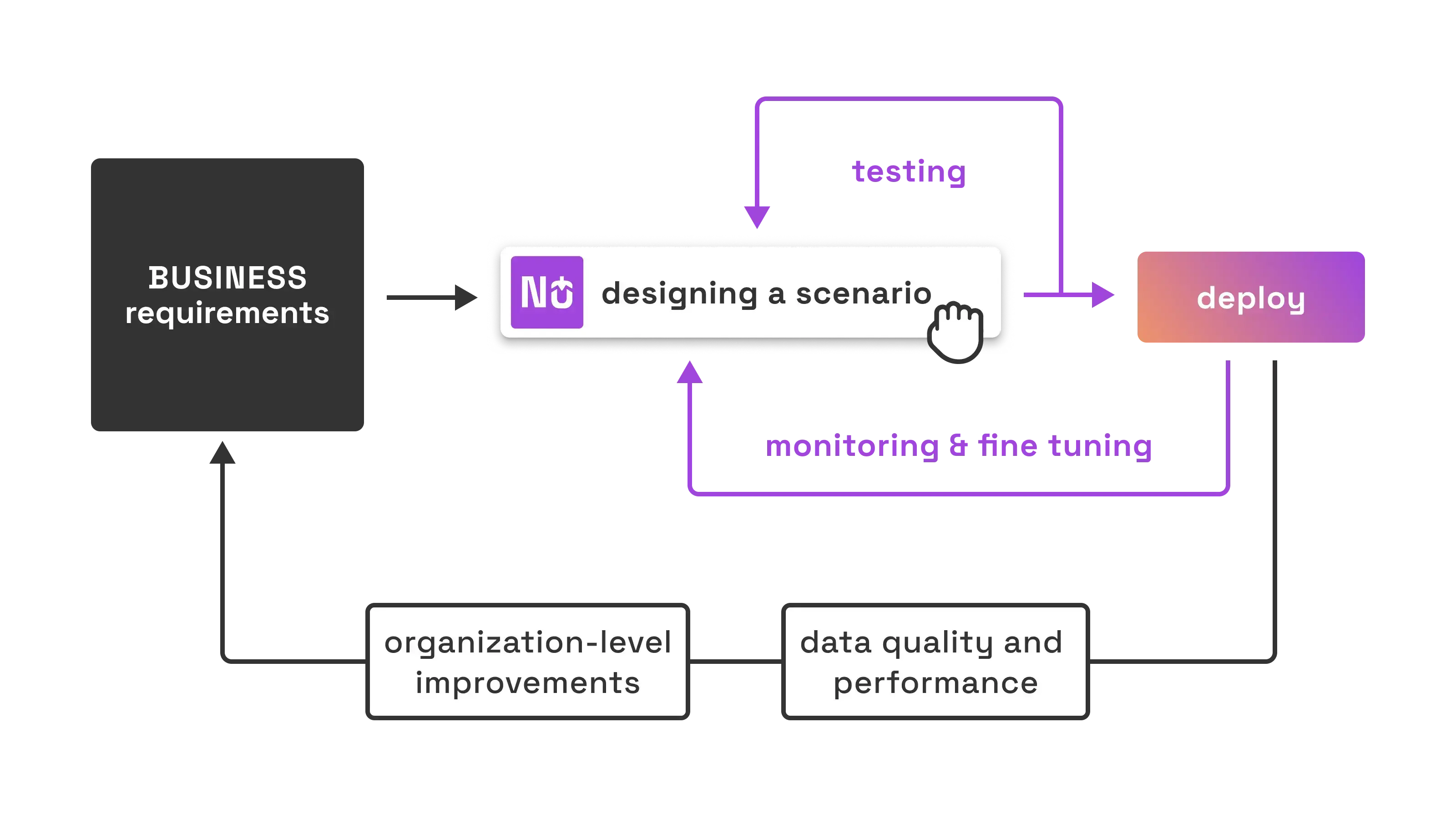Real Time Marketing System
Industry: Telecommunications
Services: wireless voice, messaging, and mobile internet
Company / Brand: Play (P4 Sp. z o.o. part of Iliad Group)
Customer base: 13 million active users
Solution highlights
Peak throughput: 900 000 + events per second
Average throughput: 400 000 + events per second
Challenge
A telecom provider sought to upgrade from batch to real-time marketing decisions. After finding their existing platform's real-time extension performed poorly, they implemented Nussknacker to handle high-throughput event processing and time-window analysis.
Solution highlights
→ Transformed batch-based marketing campaigns into real-time interactions
→ Eliminated multiple-day delays in campaign execution
→ Addressed the challenge of managing complex business rules and campaign logic
→ Resolved the issue of sending irrelevant or outdated offers to customers
→ 100 active streaming marketing campaigns, 95 batch marketing campaigns
→ Decisions are sent to marketing channels (actions), telco systems (service upgrades), and loyalty programs (bonus points)
→ Marketing channels covered: sms, mms, rcs, email, mobile devices push &pull, ivr, and telesales; all channels managed together
Real Time Marketing System's Features
- Tool for non-technical users. Nussknacker simplifies Flink, time windows, data enrichment, and API calls, presenting decision algorithms as intuitive graphs instead of code. Business rules are managed in decision tables, enabling easy updates without specialized IT skills. This frees teams to focus on business priorities over technical challenges.
- Single solution. The Nussknacker Designer simplifies creating decisioning scenarios for batch, streaming, and request-response engines. Custom components provide a unified view across channels (SMS, email, telesales, push, pull), enabling seamless multi-channel marketing. Using a single tech stack (Kafka, Flink, Redis, Nussknacker) across business domains ensured high performance with no issues in throughput or latency. Flink's support for both streaming and batch processing enabled this unified approach, allowing the client to create cross-domain and technical scenarios (like ETL) with greater cohesion and less redundancy compared to off-the-shelf solutions.
- Extendability. Nussknacker is a versatile, domain-neutral tool for building complex decisioning algorithms, including enrichers, time-window aggregates, and ML model inference. The Client uses it not only for individual marketing scenarios but also as a comprehensive communication management solution, with features like message deduplication, delivery tracking, history, and audit trails via a custom 'send-to-channel' component. Its extensibility allowed the Client to add custom components and menus to the Designer, streamlining use across all engines and business domains.
Data flow overview

Campaign development cycle

Deliver personalized experiences at scale with Nussknacker’s real-time marketing engine. Trigger campaigns, automate offers, and act on customer behavior instantly - without writing code. Contact us to start building your real-time marketing system.

